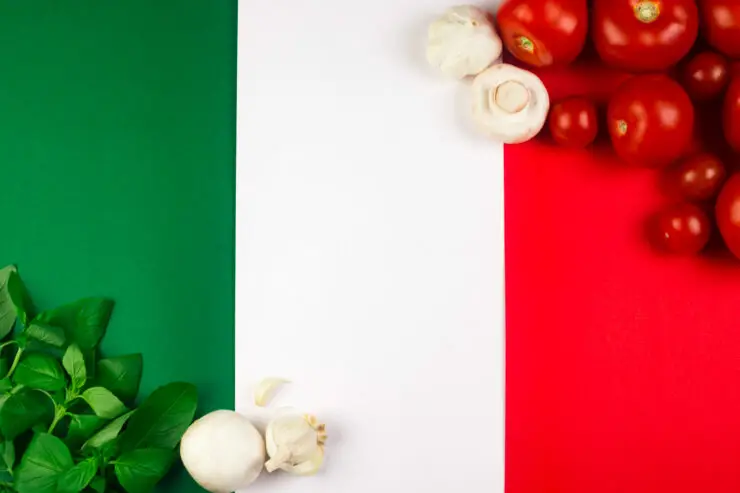As an Amazon Associate I earn from qualifying purchases. Please read the disclaimer for more info.
Picture the vibrant flavors, rich history, and regional diversity of Italian food! From the heart of Tuscany to the bustling streets of Naples, Italian cuisine offers a culinary journey like no other. Get ready to explore 50 interesting facts about Italian food that will excite your taste buds and have you booking a ticket to Italy in no time!
Short Summary
- Experience the deliciousness of Italian cuisine with its heavenly pizza, delicious pasta, and exciting regional variations!
- Indulge in classic Italian treats like Tiramisu & Cannoli for an unforgettable experience.
- Discover the real origins of beloved dishes like garlic bread, pepperoni pizza & Caesar salad!
Further Reading: 10 Best Italian Cooking Vacations: Buon Appetito
Interesting Facts About Italian Food
The Origins of Italian Cuisine
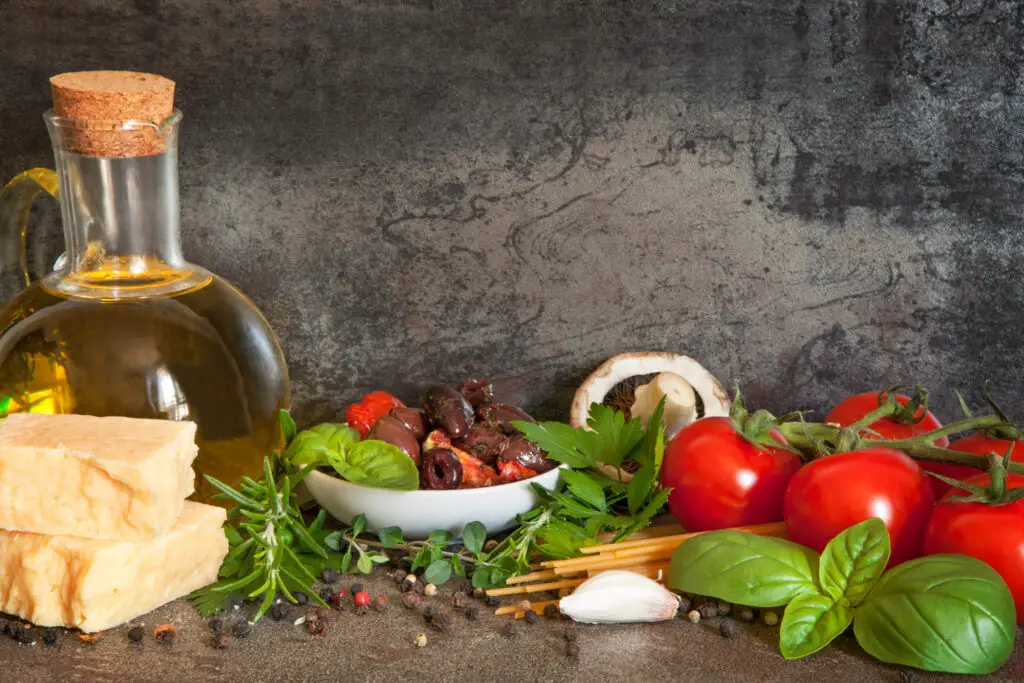
Italian cuisine is a beautiful blend of regional dishes, each with a unique story to tell. With influences from the Mediterranean, Middle East, and Europe, Italian cuisine has evolved into the mouthwatering masterpiece it is today.
A testament to the art of passing down recipes from generation to generation, Italian food is an emblem of heritage preservation and the epitome of hospitality that defines the Italian culture.
The Art of Italian Pizza
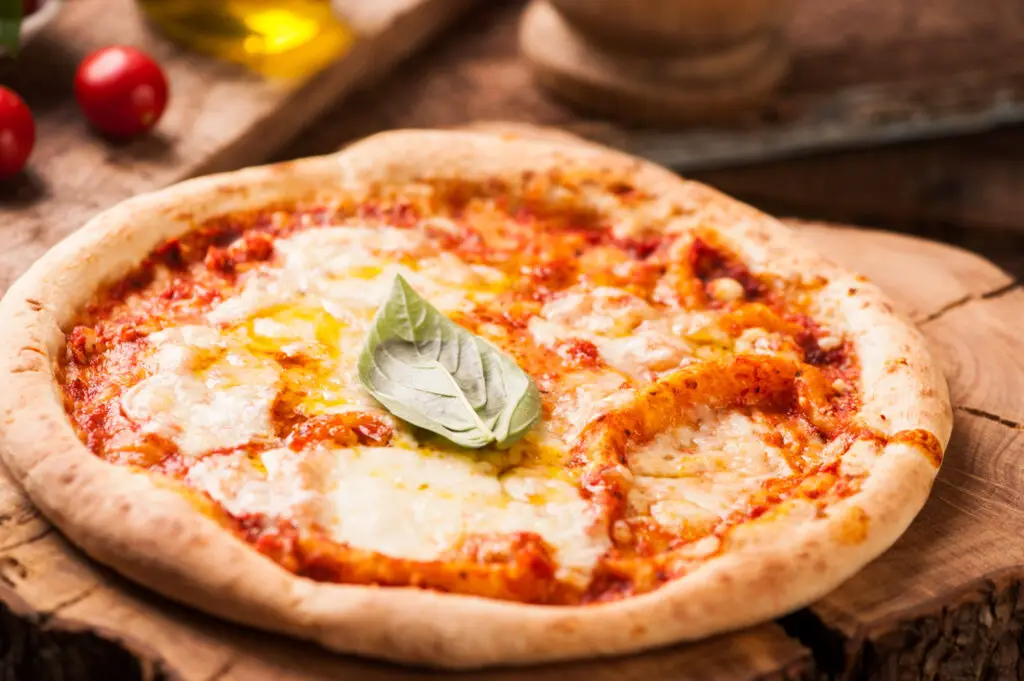
Pizza, a beloved Italian invention, has captured the hearts of food lovers worldwide. While Neapolitan pizza reigns supreme as the most famous type, Roman-style pizza closely follows its lead. With regional variations like Sicilian, Calabrian, and Pugliese pizzas, there’s a slice for everyone!
So let’s dive into the world of Italian pizza, where it all began in Naples, and explore its rich history and diversity.
Neapolitan Pizza
Born in Naples, the iconic Neapolitan pizza has a fascinating history. As the original “cucina povera” or food of the poor, pizza became a popular fast food for the working class in the 18th century. Raffaele Esposito, a pizzaiolo, introduced cheese as a topping and created the famous Pizza Margherita in honor of Queen Margherita of Savoy.
The vibrant colors of the Italian flag – white (mozzarella), red (tomato), and green (basil) – adorn this delightful dish. Neapolitan pizza is so celebrated that UNESCO granted it “Intangible Cultural Heritage” status, recognizing its cultural and historical significance.
Roman-style Pizza
Roman-style pizza, or “pizza al taglio,” is another scrumptious variation. This thick-crusted, rectangular pizza is made with yeast, flour, salt, and olive oil, creating a delightful texture with slight hollows on its surface. Sold by weight in bakeries and street food carts, Roman-style pizza can be topped with an array of mouthwatering ingredients, adding a creative twist to this Italian classic.
The toppings range from classic tomato and mozzarella to more inventive combinations like artichokes and ricotta, or even a mix of vegetables and cured meats. No matter the topping.
Regional Variations
The exciting world of Italian pizza extends far beyond Naples and Rome, with diverse regional variations like thick and doughy Sicilian pizza, spicy Calabrian pizza, and the flavorful Pugliese pizza. Each region brings its unique touch to this beloved dish, creating a world of flavors waiting to be discovered by pizza enthusiasts everywhere.
Further Reading: 7 Best Tuscany Cooking Vacations 2023: A Taste of Tuscany
Pasta: Italy’s Culinary Staple
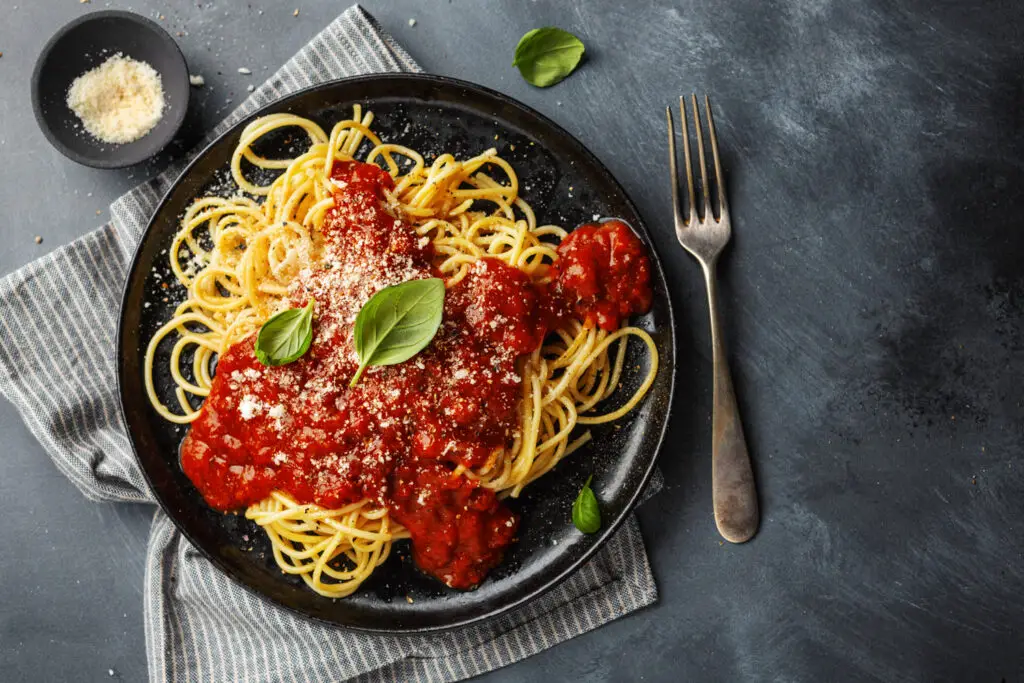
Pasta, the quintessential Italian staple, boasts over 600 types, each with its own regional specialty. With dishes that have become synonymous with Italian cuisine, such as spaghetti Bolognese and lasagna, pasta has undeniably captured the hearts of food lovers around the world.
But there’s more to pasta than meets the eye, as Italians have strict rules about pairing pasta shapes with sauces and never add cream to carbonara. So, let’s embark on a pasta journey through Italy, one twist at a time!
Types of Pasta
In Northern Italy, fresh pasta is typically made with soft wheat flour and comes in various shapes like Trofie and Bigoli. Here, you’ll find silky and golden sheets of pasta made with eggs, as well as delightful tri-colored dumpling dishes with vibrant purple beetroot and green spinach dumplings.
As we venture into Central Italy, we discover popular pasta shapes such as Bucatini, Pappardelle, and Spaghetti, each bringing a unique texture to the plate.
Regional Specialties
Italian pasta boasts a variety of regional specialties. In Lazio, savor the creamy pasta alla Carbonara, while Emilia-Romagna tempts with its rich lasagna. Central Italy is also home to other mouthwatering pasta dishes like Bucatini all’Amatriciana, Spaghetti Cacio e Pepe, and Pappardelle with Ragu.
These regional specialties showcase the diverse flavors and culinary creativity of Italian pasta.
Pasta Pairing Rules
When it comes to pairing pasta shapes with sauces, Italians follow a simple rule of thumb: thinner long pastas suit light sauces, while wider pastas work best with rich, meaty sauces.
Additionally, there are specific rules for certain dishes like Carbonara, where adding cream is considered a cardinal sin. So, next time you prepare a pasta dish, keep these pairing rules in mind to ensure an authentic Italian experience.
Italian Dining Etiquette and Traditions
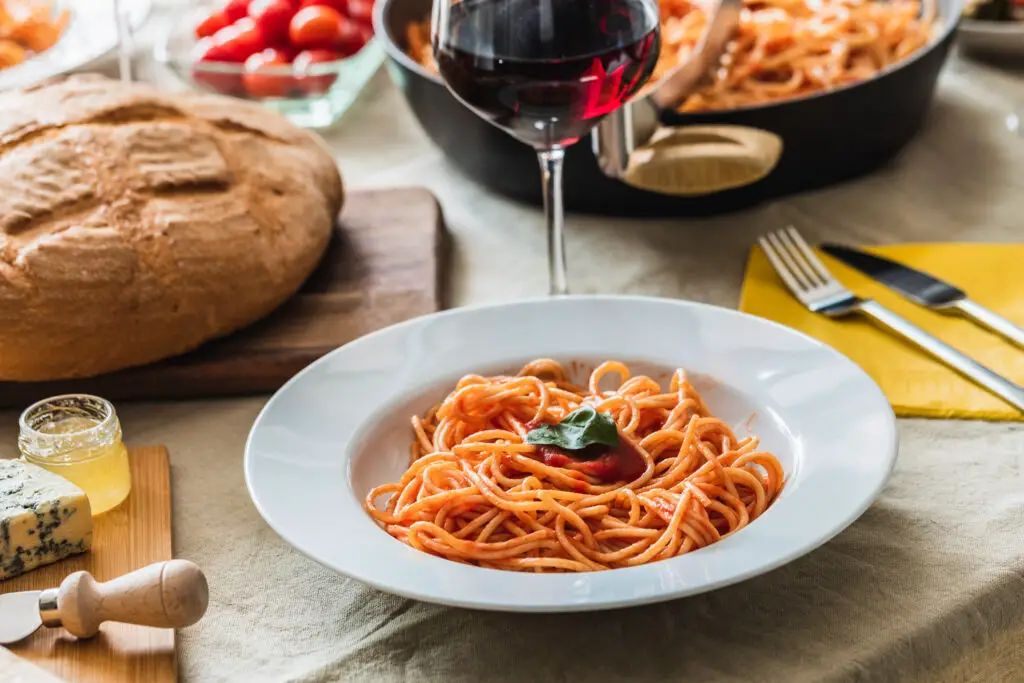
Italian dining etiquette and traditions offer a unique insight into the country’s rich food culture. From the structure of an Italian meal to the coperto charge, and the importance of wine and coffee, there’s a world of fascinating customs to explore.
Let’s delve deeper into these traditions and learn how to dine like a true Italian!
Meal Structure
A traditional Italian meal consists of multiple courses, each playing a vital role in the dining experience. The meal begins with Aperitivo, followed by Antipasti, Primi, Secondi, and finally, the sweet course, Dolce.
Lunch, or “il pranzo,” is typically served after 1 p.m., while dinner is around 8:30 p.m. A light breakfast of coffee with milk and a pastry is the norm, setting the stage for the delicious courses to follow later in the day.
Coperto Charge
In Italian restaurants, the coperto charge is a per-person fee that covers the cost of bread, salt, oil, tablecloth, and cutlery. Ranging from €1 to €5 per person, the coperto charge is not a tip but a service charge for amenities provided during the meal.
So, the next time you dine in Italy, remember that the coperto charge is an integral part of the Italian dining experience.
Wine and Coffee Culture
Wine and coffee hold a special place in Italian culture, playing a significant role in social and culinary traditions. Wine, an essential accompaniment to Italian meals, is deeply rooted in history and regional pride.
Meanwhile, coffee in Italy is taken quickly at the bar and is not a leisurely activity, unlike in France and the United States. So, when in Italy, embrace the wine and coffee culture, and savor these cherished traditions.
Related: 10 Best Cooking Classes in Rome for Italian Cuisine Lovers
Italian Food Beyond Pizza and Pasta
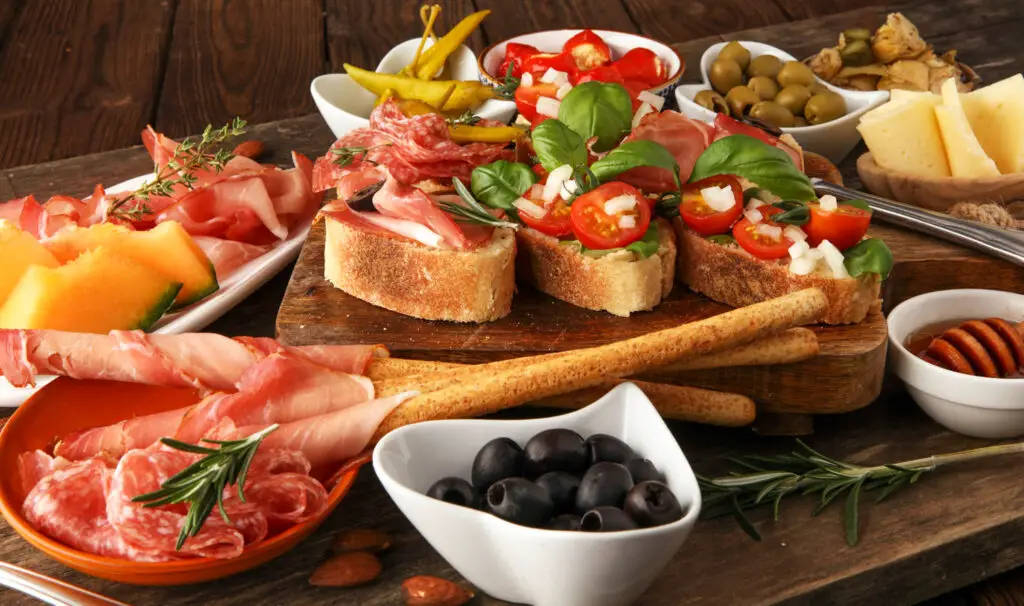
While pizza and pasta undeniably dominate the Italian culinary landscape, there’s so much more to savor. Delight in traditional Italian antipasti, explore the creamy flavors of risotto, and discover the versatility of polenta.
Embark on a culinary adventure and uncover the delicious secrets of Italian cuisine beyond pizza and pasta!
Antipasti
Antipasti, a delightful assortment of appetizers, is an integral part of Italian cuisine. Savor cured meats like prosciutto and salami, indulge in cheeses such as mozzarella and pecorino, and enjoy marinated or pickled vegetables like artichokes and peppers. Accompanied by bread or crostini, antipasti serves as a tantalizing introduction to the Italian meal, showcasing the country’s rich culinary heritage and regional variations.
Risotto
Risotto, a classic Italian dish, is made with high-starch, short-grain rice like Arborio, Carnaroli, or Vialone Nano, cooked in broth until creamy. Flavored with a variety of ingredients such as cheese, vegetables, or meat, risotto offers a versatile and satisfying alternative to pasta.
Savor every spoonful of this creamy delight and experience the essence of Italian comfort food.
Polenta
Polenta, a traditional Italian dish made of boiled cornmeal, offers a unique texture similar to porridge. Served in various ways, such as creamy, fried, or grilled, polenta showcases the adaptability of Italian cuisine beyond the realm of pizza and pasta.
As a gluten-free substitute for pasta, polenta is a versatile and delicious option for those with dietary restrictions.
Italian Desserts and Sweet Treats

Italian cuisine is not complete without indulging in its irresistible desserts and sweet treats. From the velvety layers of tiramisu to the crunchy shells of cannoli, and seasonal delights like pandoro and panettone, there’s a dessert for every craving.
Discover the delicious world of Italian desserts and surrender to the sweetness!
Tiramisu
Tiramisu, a heavenly no-bake dessert, features layers of savoiardi biscuits soaked in coffee and rum, combined with a whipped mixture of sugar, eggs, and mascarpone cheese, and topped with a dusting of cocoa powder.
Tiramisu, which means “pick me up” or “cheer me up” in Italian, lives up to its name with its delightful combination of flavors and textures.
Cannoli
Cannoli, a classic Italian pastry, features tube-shaped shells of fried pastry dough filled with a sweet, creamy ricotta mixture, often flavored with cinnamon, vanilla, lemon zest, or orange zest.
Hailing from Sicily, cannoli has become a favorite dessert worldwide, offering a sweet escape with every bite.
Seasonal Desserts
Seasonal Italian desserts like pandoro and panettone are cherished treats enjoyed during festive occasions. These delightful sweets add a touch of Italian tradition to celebrations, making the holiday season even more special.
So, make sure to savor these seasonal delights and immerse yourself in the warmth of Italian festivity.
Italian Ingredients and Flavors

The essence of Italian cuisine lies in its ingredients and flavors. Olive oil, tomatoes, cheese, and cured meats are the cornerstones of Italy food, each offering unique taste profiles and culinary possibilities.
Discover the magical world of Italian ingredients and the authentic flavors that make Italian cuisine truly unforgettable.
Olive Oil
Olive oil, an essential ingredient in Italian cuisine, is celebrated for its rich flavor, health benefits, and cultural significance. Used for cooking, frying, baking, and even making ice cream, olive oil’s versatility is truly remarkable.
Embrace the golden goodness of olive oil and elevate your Italian dishes to new heights.
Tomatoes
Tomatoes, a symbol of national pride and culinary excellence, play a crucial role in Italian cuisine. Introduced to Italy in the 15th or 16th century, tomatoes have since become an integral part of Italian food culture.
From scrumptious sauces and soups to delightful salads and pizzas, tomatoes add a burst of flavor and color to countless Italian dishes, including those with tomato sauce.
Cheese and Cured Meats
Cheese and cured meats hold a special place in the heart of Italian cuisine. From creamy burrata to tangy prosciutto, these ingredients add depth and complexity to a variety of dishes.
Cheese is the heart of Italian cuisine, while cured meats, often served as antipasti, showcase the country’s rich culinary heritage. Embrace the delightful flavors of cheese and cured meats and experience the true essence of Italian cuisine.
Italian Food Myths Debunked
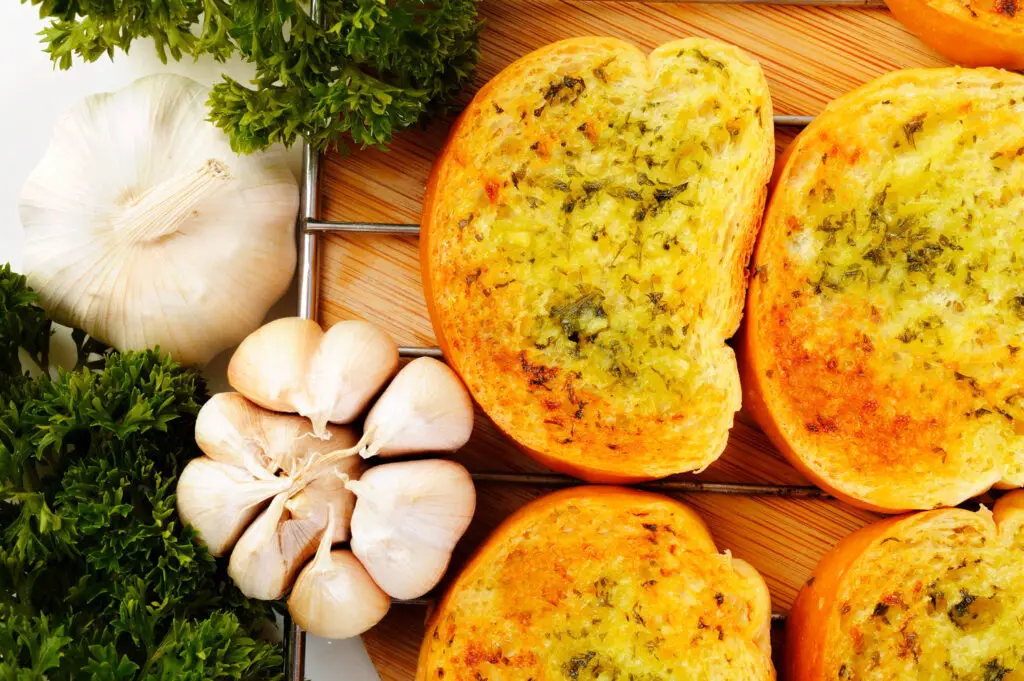
Italian food is often misunderstood, with myths surrounding dishes like garlic bread, pepperoni pizza, and Caesar salad. These popular items, while enjoyed all over the world, are not authentic Italian dishes. To better understand this cuisine, let’s explore some Italian food facts.
Let’s debunk these myths and uncover the true origins of these beloved foods!
Garlic Bread
Garlic bread, an Italian-American invention, originated in the United States and was likely inspired by the Italian dish bruschetta. Made by slicing a loaf of bread and spreading it with butter or olive oil, then topping it with garlic and herbs, garlic bread is a delicious variation of an Italian classic.
It is a popular side dish served in many restaurants and is easy to make at home. Garlic bread can be served as an appetizer, side dish, or even as a main course. It is also a great experience.
Pepperoni Pizza
Pepperoni pizza, another Italian-American creation, was popularized by Italian immigrants in New York City in the early 1900s.
While not a traditional Italian dish, pepperoni pizza has gained popularity in Italy under the names “pizza con salame piccante” or “pizza alla diavola.”
Caesar Salad
Contrary to popular belief, Caesar salad is not an Italian invention, but was actually created by an Italian man named Caesar Cardini in Tijuana, Mexico, in the 1920s. Made with romaine lettuce, croutons, Parmesan cheese, and a dressing of olive oil, garlic, lemon juice, Worcestershire sauce, and raw egg, Caesar salad has become a beloved dish worldwide, transcending its unexpected origins.
Regional Italian Cuisine
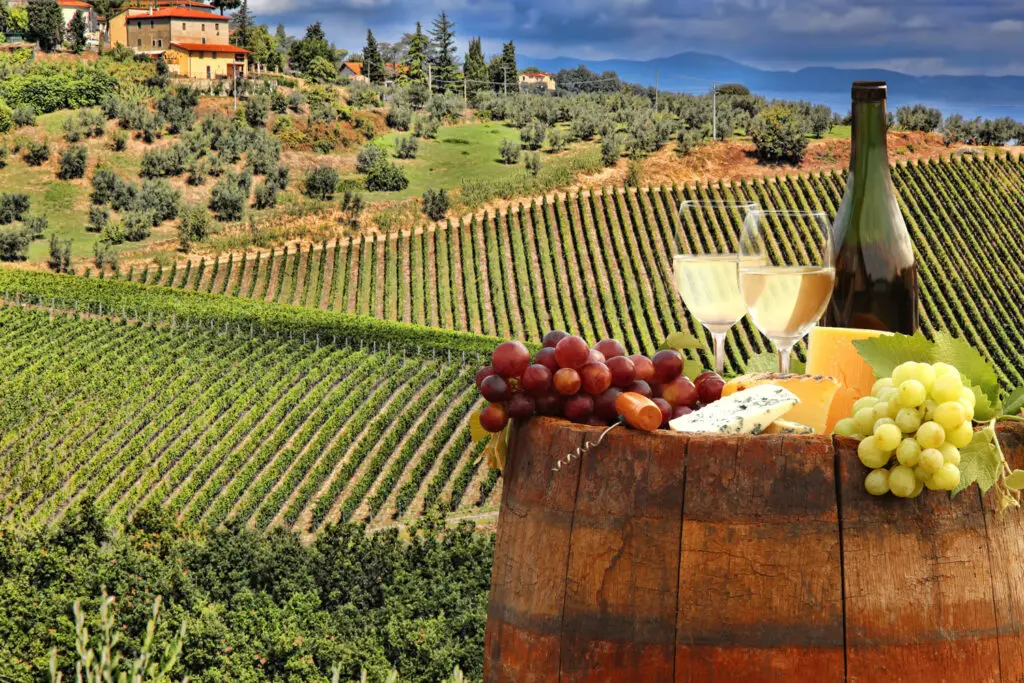
Regional Italian cuisine offers a diverse array of flavors and dishes, reflecting the rich culinary heritage of each region. From Tuscan dishes like ribollita, Florentine steak, and panzanella to the seafood delights of coastal areas, regional Italian cuisine is a treasure trove of culinary gems waiting to be discovered.
Tuscany
Tuscan cuisine is characterized by its use of fresh, local ingredients and simple yet flavorful dishes. Savor the hearty flavors of ribollita, a vegetable and bean soup with stale bread, or indulge in a juicy Florentine steak, served with a side of spinach.
Don’t forget to try panzanella, a refreshing salad made with tomatoes, onions, and stale bread. Each dish is a testament to the rich culinary traditions of Tuscany, offering a true taste of Italy.
Summary – Facts About Italian Food
From the rich history of Italian cuisine to the diverse regional dishes and flavors, Italian food is an unrivalled culinary adventure. As we’ve explored the fascinating world of Italian food, from the art of pizza and pasta to the etiquette and traditions of Italian dining, it’s clear that Italian cuisine is much more than just a meal – it’s an experience.
I hope you enjoyed this look at some interesting facts about Italian food.
Frequently Asked Questions
What is Italian food known for?
Italian food is renowned for its deliciousness and diversity! From pastas and pizzas to seafood and hearty stews, it’s no wonder Italian food has become a favorite around the world.
Desserts like tiramisu and gelato are especially beloved too. There’s something for every palate in Italian cuisine – which is why we all love it so much!
What is Italian number 1 food?
Pizza is undisputedly Italy’s number one food – savoury, simple yet so delicious! You may have had pizza before, but Italian-style pizza is a whole different experience that’s sure to tantalize your taste buds.
Pizza is definitely a must-try when in Italy!

